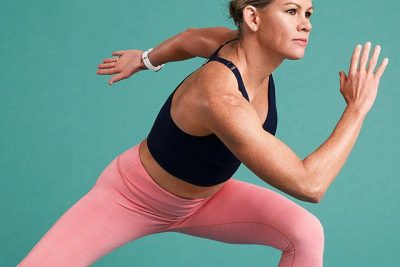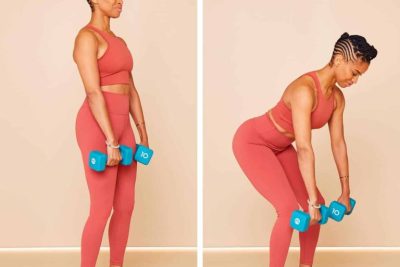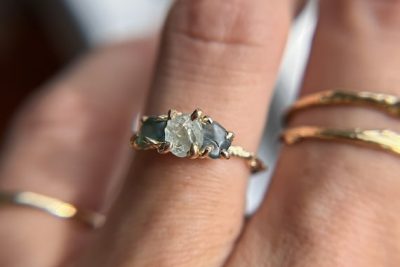
Alternatives to Leg Curls, Leg Extensions and Leg Press

Building strong, powerful legs is essential for overall fitness, whether you're an athlete, a runner, or just someone who wants to stay active and injury-free.
Traditional gym machines like the leg press, leg extension, and leg curl are staples for targeting the lower body, but they're not always accessible or ideal for everyone. Maybe you don't have a gym membership, or perhaps you're looking for machine-free options to avoid joint stress or add variety to your routine.
In this comprehensive guide, we'll explore effective alternatives to three key leg exercises: leg curls, leg extensions, and leg presses.
These alternatives use bodyweight, free weights, resistance bands, or minimal equipment, making them perfect for home workouts or crowded gyms. We'll cover how to perform each exercise, the muscles targeted, and tips for progression to help you build muscle, strength, and endurance.
Whether you're a beginner or advanced, these options will help you achieve balanced, powerful legs.
Alternatives to Leg Curls
Leg curls, also known as hamstring curls, are excellent for isolating the hamstrings—the muscles at the back of your thighs.
They help improve knee stability, reduce injury risk, and balance out quad-dominant exercises.
However, if you lack access to a leg curl machine or find the prone position uncomfortable, there are plenty of effective substitutes that target the hamstrings while engaging other posterior chain muscles like the glutes and lower back.
Single-Leg Deadlift
The single-leg deadlift is a fantastic bodyweight exercise that strengthens your hamstrings and glutes while challenging your balance and core stability. It's a unilateral move, meaning it works one side at a time, helping to correct imbalances.
Muscles worked: Hamstrings, glutes, lower back, core.
Equipment needed: None (or dumbbells for added resistance).
- Stand with your feet together. Shift your weight onto your right foot, keeping your back and neck straight.
- Hinge at the waist, extending your left leg back while lowering your torso toward the floor. Keep your right knee soft and hips square.
- Lower until your body forms a straight line from head to toe, then slowly return to standing.
- Complete 8–12 reps per leg for 3 sets.
Advanced variation: Hold a dumbbell or kettlebell in the opposite hand for added challenge.
Single-Leg Bridge
This variation of the glute bridge intensifies hamstring engagement by working one leg at a time. Focus on full hip extension to maximize activation.
Muscles worked: Hamstrings, glutes, core.
Equipment needed: None.
- Lie on your back with knees bent and feet flat on the floor. Extend your right leg at a 45-degree angle.
- Push through your left heel to lift your hips, squeezing your glutes and hamstrings.
- Pause at the top, then lower slowly.
- Do 10–15 reps per leg for 3 sets.
Tip: For progression, add a resistance band around your thighs or hold a weight on your hips.
Nordic Curl
Nordic curls are a bodyweight powerhouse for hamstring strength. Use a partner, furniture, or a stability ball to anchor your feet.
Muscles worked: Hamstrings, glutes, calves.
Equipment needed: Couch or partner for anchoring.
- Kneel facing away from an anchor (like a couch), with feet secured underneath.
- Slowly lower your torso forward, controlling the descent with your hamstrings.
- Fall into a pushup if needed, then push back up.
- Aim for 6–10 reps for 3 sets.
Beginner modification: Use a resistance band for assistance or shorten the range of motion.
Good Morning
The good morning mimics the hamstring curl's hip hinge but adds a barbell for overload. Start light to protect your lower back.
Muscles worked: Hamstrings, glutes, lower back.
Equipment needed: Barbell (or dumbbells).
- Stand with feet shoulder-width apart, barbell on your shoulders.
- Hinge at the hips, lowering your torso while keeping knees soft and back straight.
- Lower until parallel to the floor, then return to standing.
- Perform 8–12 reps for 3 sets.
Pro tip: Keep your gaze forward to maintain neutral spine alignment.
Hip Thrust
Hip thrusts target the hamstrings and glutes with an elevated setup, making them more intense than bridges.
Muscles worked: Hamstrings, glutes, quads.
Equipment needed: Bench and dumbbell or barbell.
- Sit on the floor with your upper back against a bench, weight on your hips.
- Bend knees, feet flat, and drive hips up until thighs are parallel to the floor.
- Squeeze glutes at the top, then lower.
- Do 10–15 reps for 3 sets.
Advanced: Use a barbell for heavier loads.
Stability Ball Hamstring Curl
This adds core work to hamstring isolation, requiring stability and control.
Muscles worked: Hamstrings, glutes, core.
Equipment needed: Stability ball.
- Lie on your back, feet on the ball, hips lifted.
- Pull the ball toward your butt with your heels, curling your hamstrings.
- Extend back out without letting hips sag.
- Complete 10–12 reps for 3 sets.
Barbell Deadlift
A full-body strength builder, the deadlift heavily recruits hamstrings.
Muscles worked: Hamstrings, glutes, back, core.
Equipment needed: Barbell.
- Stand behind the barbell, feet shoulder-width.
- Hinge at hips, grip the bar, and lift by straightening legs.
- Lower back down with control.
- Aim for 6–8 reps for 3 sets.
Kettlebell Swing
Great for power and endurance, swings explode through the hamstrings.
Muscles worked: Hamstrings, glutes, core.
Equipment needed: Kettlebell.
- Stand with feet wide, kettlebell between legs.
- Hinge and swing the bell up to shoulder height using hip drive.
- Let it swing back and repeat.
- Do 15–20 reps for 3 sets.
For hamstring development, incorporate 1–2 of these alternatives 2–3 times per week. Start with bodyweight versions and progress to weighted ones for overload.
Alternatives to Leg Extensions
Leg extensions isolate the quadriceps (quads) for knee extension, building strength and definition in the front of your thighs.
They're great for quad-focused training but can stress the knees if overdone.
Alternatives mimic this isolation while often adding compound elements for better overall leg development. Focus on controlled movements and full range for best results.
Dumbbell Leg Extension
A simple home alternative using a dumbbell for resistance.
Muscles worked: Quads, adductors.
Equipment needed: Dumbbell, bench.
- Sit on a bench, dumbbell between feet.
- Extend legs to near full extension.
- Lower with control.
- 10–15 reps per set, 3 sets.
Reverse Prowler Push
Push a sled backward for quad endurance or strength.
Muscles worked: Quads, calves.
Equipment needed: Sled or prowler.
- Face away from sled, back against handles.
- Drive backward with quads.
- Push for distance, repeat.
- 3–5 rounds.
Wall Sit
An isometric hold that burns the quads.
Muscles worked: Quads, glutes.
Equipment needed: Wall.
- Lean against wall, slide down to 90-degree knee bend.
- Hold for time (20–60 seconds).
- 3–4 holds.
Plank Leg Extension
Combines core and quad work.
Muscles worked: Quads, core, shoulders.
Equipment needed: Plyo box or bench.
- Plank with feet on box.
- Bend knees, then extend fully.
- 8–12 reps, 3 sets.
Reverse Nordic
Bodyweight quad stretch and strengthener.
Muscles worked: Quads.
Equipment needed: None.
- Kneel, lean back until butt nears heels.
- Push back up with quads.
- 6–10 reps, 3 sets.
Heel-Elevated Narrow Stance Sissy Squat
Targets quads with balance challenge.
Muscles worked: Quads, core.
Equipment needed: Weight plates, support.
- Elevate heels, narrow stance, hold support.
- Squat down, knees forward.
- Push up through heels.
- 8–12 reps, 3 sets.
Home options without machine: Use ankle weights or resistance bands for seated extensions, following similar steps.
For quads, aim for higher reps (10–20) to build endurance and size. Progress by adding weight or slowing eccentrics.
Alternatives to Leg Press
The leg press is a compound move that builds quad, hamstring, and glute strength with heavy loads in a supported position.
It's great for overload but requires a machine. Alternatives replicate the pressing motion using free weights, bands, or bodyweight, often with better functional carryover and less back stress.
Resistance Band Leg Press
A portable option mimicking machine resistance.
Muscles worked: Quads, hamstrings, glutes, calves.
- Lie face up, band around feet, hold ends.
- Press feet away until straight.
- Bend knees to 90 degrees.
- 8–12 reps, 3 sets.
Squats (Bodyweight, Goblet, Barbell, Sumo, Split)
Squats are versatile and machine-free.
Muscles worked: Quads, glutes, hamstrings.
- Stand hip-width, lower until thighs parallel.
- Push up through heels.
- Variations: Goblet (hold weight), sumo (wide stance), split (one leg forward).
- 8–12 reps, 3 sets.
Lunges
Step forward for quad and glute focus.
Muscles worked: Quads, glutes, hamstrings.
- Step forward, lower until front thigh parallel.
- Push back to start.
- 8–12 reps per leg, 3 sets.
Broad Jumps
Explosive for power.
Muscles worked: Quads, hamstrings, glutes, calves.
- Squat and jump forward.
- Land softly.
- 8–12 reps, 3 sets.
Bridge (Glute Bridge)
Stabilizes core while working legs.
Muscles worked: Quads, glutes, hamstrings.
- Lie back, lift hips to straight line.
- Lower and repeat.
- 8–12 reps, 3 sets.
Smith Machine Leg Press/Squat
For gym access, use Smith for stability.
Muscles worked: Quads, glutes, hamstrings.
- Lie under bar or stand for squat.
- Press or squat down/up.
- 8–12 reps, 3 sets.
Hack Squat (Machine)
Similar to leg press but vertical.
Muscles worked: Quads, glutes.
- Load machine, press up/down.
- 8–12 reps, 3 sets.
Leg Extension (as Quad Focus)
For quad emphasis in combo routines.
Goblet Squat
Front-loaded for upright posture.
- Hold dumbbell at chest, squat.
Bulgarian Split Squat
Unilateral for balance.
- Rear foot elevated, squat on front leg.
Box Jump
Plyometric for explosiveness.
- Jump onto box, step down.
Assisted Pistol Squat
Single-leg challenge.
- Lower on one leg, extend other forward.
Spanish Squat (Band)
Band behind knees for support.
- Squat with band pulling forward.
Banded Squat
Loop band over shoulders.
- Squat against resistance.
For leg press alternatives, focus on progressive overload—add weight or reps weekly. Combine with warm-ups to prevent injury.
In conclusion, these alternatives provide flexible, effective ways to train your legs without machines. Mix them into your routine for balanced development, and consult a doctor if you have injuries. Stay consistent for stronger, more resilient legs!






Leave a Reply